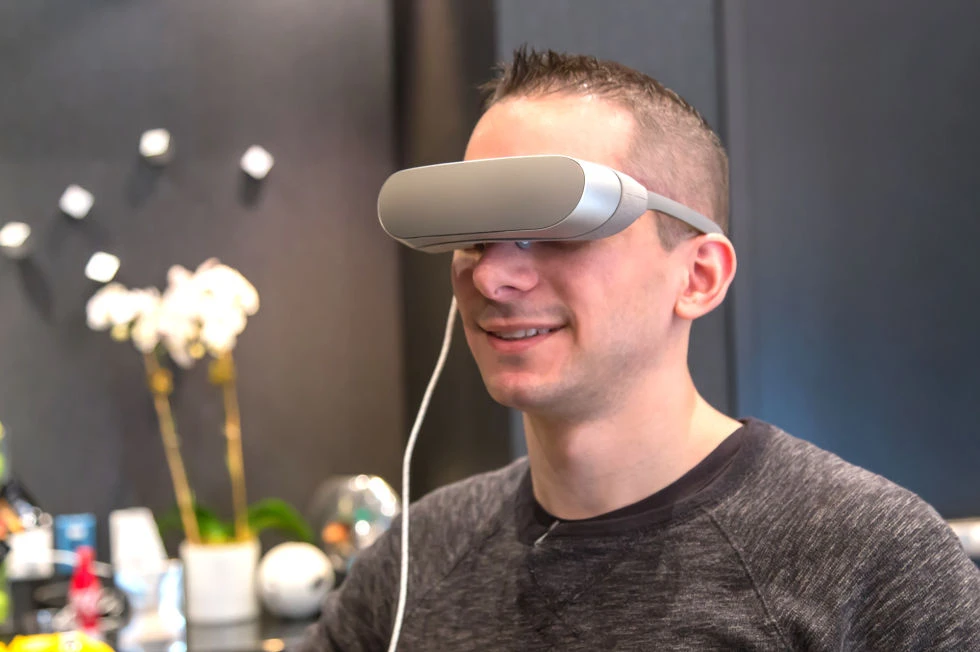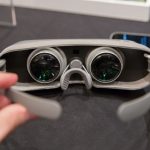G’s biggest announcement today is undoubtedly the LG G5, but next to the company’s flagship smartphone, it was also demoing this crazy VR headset called the “LG 360 VR.” It requires a smartphone to work, but unlike Galaxy Gear-style headsets that require you to slot the phone into the headset, this headset is just tethered to the LG G5 via a USB cable.
The device is basically an external display for the G5, allowing the headset to have a slimmer profile while cutting the weight down to only 118g. LG isn’t offering many specifics about the display inside the headset, only saying it has a resolution of 639 ppi. LG also isn’t saying much in the way of pricing, a launch date, or even capabilities, but it does mention that it “is compatible with 360-degree images as well as all Google Cardboard content.”
We were able to briefly check out prototype hardware at LG’s G5 event, and we can say the big, face-engulfing VR headsets are that size for a reason—namely blocking out the light in the room. This was more like wearing a pair of opaque eyeglasses; allowing light to gush in from the top and bottom of the device. For the most part, the headset didn’t work yet, but it did briefly mirror the G5’s home screen when we plugged in the USB cable. The display area is about what you would expect from looking at the outside of the device. It’s a long, thin screen the fills maybe half your vertical vision. It won’t be a device for immersion, but LG says it will “simulate a 130-inch TV viewed from two meters.”
Despite the Type-C cable, LG says the 360 VR only works with the LG G5. The device uses the phone for processing, rendering an image, and power. On the inside of the headset is a pair of lenses, a nose bumper, and a face sensor that automatically turns the display on and off. There are two buttons on top for “OK” and “Back,” but we didn’t see any way to navigate a UI, like arrow keys. While LG doesn’t really mention it, being compatible with Google Cardboard apps means it will also need to have some kind of head tracking system, probably done via accelerometers.


It’s hard to know if the 360 VR is actually any good, since the unit on display didn’t really work. So while details are slim right now, know that LG is at least dipping its toe into the VR waters.









